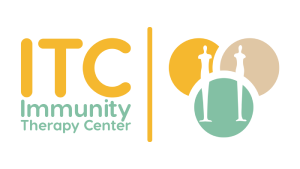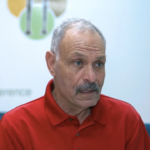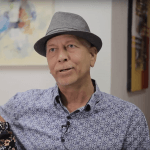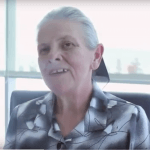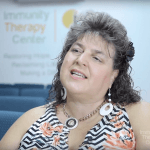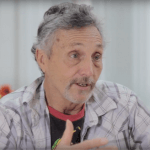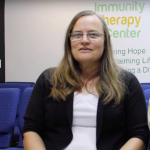Medically Reviewed by: pdm
Our Editorial Policy
Updated on: noviembre 21, 2019
Acerca del cáncer de próstata
El cáncer de próstata es uno de los cánceres más comunes entre los hombres, pero también es uno de los que se pueden tratar con más éxito. Este tipo de cáncer se desarrolla en la glándula con forma de nuez que es responsable de:
- Producir semen
- Transportar el esperma
Es un cáncer típicamente (pero no siempre) de crecimiento lento que permanece un tiempo en la glándula prostática sin extenderse ni causar daños graves. Sin embargo, si no se trata, acabará destruyendo la próstata y haciendo metástasis en órganos locales y distantes.
Existen varios tipos diferentes de cáncer de próstata. Los tipos más comunes que se encuentran en los pacientes con cáncer de próstata incluyen:
- Adenocarcinoma acinar Células cancerosas o tumores que se originan en las células de la glándula que recubren la glándula de la próstata. Esto representa la gran mayoría de los casos de cáncer de próstata.
- Adenocarcinoma ductal comienza en las células que recubren los conductos de la glándula prostática. Es una forma más agresiva y más invasiva de adenocarcinoma.
- Cáncer de células de transición También conocido como cáncer urotelial, comienza en las células que recubren la uretra. Aunque puede comenzar en la próstata, lo más común es que comience en la vejiga y luego se extienda a la próstata.
- Cáncer de células escamosas Son células cancerosas de rápido desarrollo y propagación que crecen en las células planas que cubren la próstata.
- Cáncer de próstata de células pequeñas Una forma de cáncer neuroendocrino que se compone de pequeñas células redondas.
Según la Sociedad Americana del Cáncer, anualmente habrá:
- Cerca de 174.650 nuevos casos de cáncer de próstata.
- Alrededor de 31.620 muertes por cáncer de próstata.
El paciente promedio de cáncer de próstata es un hombre mayor de 65 años.
Causas y factores de riesgo del cáncer de próstata
Hasta el día de hoy, los médicos siguen sin estar seguros de por qué las células de la próstata empiezan a mutar y luego se acumulan. Sin embargo, conocemos algunos factores de riesgo que pueden aumentar las posibilidades de desarrollar cáncer de próstata:
- Edad El riesgo de cáncer de próstata aumenta con la edad.
- Raza Como sucede en varios tipos de cáncer, los hombres negros se enfrentan a un mayor riesgo de cáncer de próstata en comparación con otros hombres de diferentes razas. También son más propensos a tener una forma agresiva de cáncer.
- Historial genético Si los hombres de su familia han tenido cáncer de próstata, o si las mujeres de su familia han tenido cáncer de mama, su probabilidad de desarrollarlo aumenta significativamente.
- La obesidad Casi todas las formas de cáncer tienen una relación entre el peso no saludable y el cáncer. Los pacientes obesos a los que se les diagnostica cáncer de próstata suelen tener también una versión más agresiva de la enfermedad.
Detección temprana, diagnóstico y estadificación
El cáncer de próstata rara vez presenta síntomas perceptibles en sus primeras etapas de desarrollo. En etapas posteriores, los signos pueden incluir:
- Sangre en el semen
- Sangre en la orina
- Dolor de huesos
- Dificultad para orinar
- Disfunción eréctil
- Dolor, presión o molestia pélvica
- Flujo de orina débil
La detección del cáncer de próstata se hace generalmente de una de dos maneras:
- Examen rectal digital Un médico examina digitalmente la próstata, buscando a través de la palpación anomalías en la glándula.
- Prueba del antígeno prostático específico (PSA) Durante una prueba de PSA, se toma una muestra de sangre y luego se analiza su nivel de PSA. Si se encuentran altos porcentajes, puede ser un indicio de cáncer de próstata.
Etapas del cáncer de próstata
Cuando se trata de la puesta en escena, hay puntuaciones asignadas en base a los tres factores TNM:
- T T: El tamaño y la ubicación del tumor
- N – Cuando el tumor se ha propagado para infectar los ganglios linfáticos locales N – El número de nódulos linfáticos cercanos implicados
- M – Cuando el cáncer es metastásico y se ha extendido a otros órganos – Metastasis, how far it has spread
De acuerdo con la clasificación del TNM, la estadificación tiene matices o etapas secundarias según el caso concreto; sin embargo, se aplican ciertas generalidades.
- Etapa I – Las células cancerosas están creciendo en la próstata pero aún no se han extendido más allá de ella y el tumor está en la mitad o menos de la mitad de la próstata.
- Etapa II – El cáncer ha permanecido dentro de la próstata, pero el tumor es capaz de tocar más de la mitad de un lóbulo de la próstata.
- Etapa III – Durante esta etapa, el cáncer se ha extendido fuera de la próstata. Sin embargo, las células cancerosas de la próstata no han llegado a los ganglios linfáticos.
- Etapa IV – En esta etapa tardía, el cáncer se ha propagado a los ganglios linfáticos cercanos, pero puede o no haberse propagado a órganos distantes, dependiendo de si es la etapa IVA o IVB.
Próximos pasos:
El Immunity Therapy Center utiliza una variedad de tratamientos alternativos para el cáncer para fortalecer su sistema inmunológico mientras se dirige directamente a las células cancerosas. El tipo y la combinación de terapias que utilizamos varían dependiendo del tipo y la ubicación del cáncer, la etapa del cáncer y la salud general del individuo. Si usted está interesado en un plan de tratamiento de terapia alternativa personalizada o aprender más acerca de la terapia alternativa para el tratamiento del cáncer, ¡comuníquese con el Immunity Therapy Center hoy!
Fuentes:
Sociedad Americana del Cáncer. Estadísticas clave para el cáncer de próstata. https://www.cancer.org/cancer/prostate-cancer/about/key-statistics.html
Chornokur, G. NCBI. Racial Differences in the Diagnosis and Treatment of Prostate Cancer. https://www.ncbi.nlm.nih.gov/pmc/articles/PMC5169094/
WebMD. Etapas y grados del cáncer de próstata. https://www.webmd.com/prostate-cancer/prostate-cancer-stages#3
Terapias que usamosAt Immunity Therapy Center, our goal is to provide objective, updated, and research-based information on all health-related topics. This article is based on scientific research and/or other scientific articles. All information has been fact-checked and reviewed by Dr. Carlos Bautista, a Board Certified Medical Doctor at Immunity Therapy Center. All information published on the site must undergo an extensive review process to ensure accuracy. This article contains trusted sources with all references hyperlinked for the reader's visibility.
Cuidado personalizado para el cuerpo y la mente
Discuta su plan de tratamiento alternativo personalizado con nuestro equipo hoy mismo.
Escuche a nuestros pacientes
Descubra por qué Immunity Therapy Center es un nombre de confianza en el turismo médico y los centros de tratamiento del cáncer en México.
FAQ's
Select Topic:- Diseases and Treatments
- Our Mexico-based Center and Team
- Patient Expectations and Experiences
- Costs and Travel Arrangements
Diseases and Treatments
Many patients come to us after going through several rounds of chemotherapy, radiation, surgery, and other conventional cancer treatments. Our alternative cancer therapy programs are often more effective and have fewer side effects for our patients than those treatments.
Many of our alternative therapies are designed to boost your immune system so it is better able to recognize, fight, and kill cancer cells without the need of chemotherapy and radiation.
Learn more about our alternative cancer therapies.
We offer the following alternative therapies for naturally treating cancer and other diseases:
- Whole Body Hyperthermia
- Localized Hyperthermia
- Sonodynamic Therapy
- Laser Cancer Therapy
- Insulin Potentiation Therapy (IPT)
- Rife Therapy
- Intravenous Solutions (IV Cancer Therapy)
- Enzymatic Cancer Therapy
- Oxygen Cancer Therapy
- Vitamin and Mineral Supplements
- Laetrile Therapy (Vitamin B17)
- Specific Transfer Factor Vaccine Against Cancer
- Regenerative Cell Cancer Therapy (Peptide Treatment)
- Intraperitoneal Perfusion Hyperthermia
- Viral Anticancer Vaccine
We emphasize immunotherapy cancer therapy, which includes different therapies designed to boost and strengthen your immune system so it can recognize, fight, and kill cancer cells on its own. Immunity Therapy Center is unique because we are able to offer both alternative and conventional treatments in customized, individualized programs.
Learn more about our alternative cancer therapies.
Most treatment programs are completed in three weeks. Depending on the stage and condition of your disease, you may require a treatment program of six weeks or more.
Learn more about our treatment process.
Dr. Bautista will evaluate you once your program is complete and recommend follow-up care. Depending on your situation, this may include alternative therapies, medications, and natural supplements you can take at home, or returning to our center in three to six months for further treatment.
Learn more about our alternative cancer treatment process.
Our Mexico-based Center and Team
We are in Tijuana, a major metropolitan city in Baja California, Mexico, right across the border from San Diego, California. Learn more about our location and our facility.
Dr. Bautista received formal medical training from Baja California State University in Mexico. He also holds a Masters in Nutrition from the same university. He has worked as a Director for alternative medicine hospitals. Early in his career, Dr. Bautista became interested in alternative cancer therapy and treatments and has studied alternative treatments extensively around the world.
Learn more about Dr. Bautista.
Patient Expectations and Experiences
Our alternative, natural treatment programs are completely customized and different for each person. Dr. Bautista personally evaluates each patient to design a holistic, alternative therapy program based on specific needs. He meets with every patient, every day, to monitor and evaluate his or her treatment and progress. This allows him to make immediate adjustments to treatments as needed.
Our entire team strives to make your treatment program a positive experience.
Learn more about our treatment process and listen to some of our patients’ experiences at Immunity Therapy Center.
We treat a wide range of patients with a variety of cancer types from stage 1 to stage 4, as well as patients with different autoimmune diseases, chronic degenerative diseases, and infectious diseases. All these factors, as well as previous treatments and medical history, impact individual success and survival rates.
Dr. Bautista will discuss your condition and chance of success during your initial consultation. Many of our patients do go into remission and see enhanced quality of life following treatment.
Learn more about survival and success rates.
We highly encourage bringing a friend or family member. Having strong support is an important factor in your treatment success.
Dr. Bautista and our nutritionist will discuss your diet with you during your cancer treatment. Your specific dietary needs may vary, but we encourage you to eat a balanced, organic diet as much as possible.
We have an onsite chef that prepares organic, healthy meals at our center.
Costs and Travel Arrangements
A typical three-week treatment program costs $18,995USD, and includes all therapies, diagnostics, and a healthy, organic, breakfast and lunch (+2 juices/smoothies) Monday – Saturday. Room and other board, travel costs, surgeries, and blood transfusions are not included. Some very specific therapies may not be included. Depending on your stage and condition, you may need six weeks of treatment or more.
There are options to help you cover the cost of your alternative cancer treatment at Immunity Therapy Center. Visit our Payment & Financing page to learn more.
Unfortunately, most major health insurance providers do not cover alternative treatments, but there are other options to help you cover the cost of your treatment. Visit our Payment & Financing page to learn more.
We accept major credit cards (some fees may apply), personal and cashier’s checks, wire transfers, and cash. You can also easily PAY ONLINE.
Airfare is not included in the program cost; however, transfers to and from the airport (Tijuana or San Diego) and transportation between our center and your hotel are included.
You may fly into Tijuana, Mexico or San Diego, California. Wewill make arrangements to meet and pick you up at either airport. We are only 25 minutes from the San Diego International Airport. You may also drive to the center. When you schedule your treatment, we will provide detailed driving directions.
Learn more about making travel arrangements to our facility in Tijuana, Mexico.
If you are undergoing outpatient treatment, you will need to stay in a local hotel or other lodging option during your treatment. We are located near several quality hotels in Tijuana, and have arranged special rates for our patients.
Learn more about recommended hotels and accommodations on our Travel Information page.
FAQ's
Select Topic:- Diseases and Treatments
- Our Mexico-based Center and Team
- Patient Expectations and Experiences
- Costs and Travel Arrangements
Diseases and Treatments
Many patients come to us after going through several rounds of chemotherapy, radiation, surgery, and other conventional cancer treatments. Our alternative cancer therapy programs are often more effective and have fewer side effects for our patients than those treatments.
Many of our alternative therapies are designed to boost your immune system so it is better able to recognize, fight, and kill cancer cells without the need of chemotherapy and radiation.
Learn more about our alternative cancer therapies.
We offer the following alternative therapies for naturally treating cancer and other diseases:
- Whole Body Hyperthermia
- Localized Hyperthermia
- Sonodynamic Therapy
- Laser Cancer Therapy
- Insulin Potentiation Therapy (IPT)
- Rife Therapy
- Intravenous Solutions (IV Cancer Therapy)
- Enzymatic Cancer Therapy
- Oxygen Cancer Therapy
- Vitamin and Mineral Supplements
- Laetrile Therapy (Vitamin B17)
- Specific Transfer Factor Vaccine Against Cancer
- Regenerative Cell Cancer Therapy (Peptide Treatment)
- Intraperitoneal Perfusion Hyperthermia
- Viral Anticancer Vaccine
We emphasize immunotherapy cancer therapy, which includes different therapies designed to boost and strengthen your immune system so it can recognize, fight, and kill cancer cells on its own. Immunity Therapy Center is unique because we are able to offer both alternative and conventional treatments in customized, individualized programs.
Learn more about our alternative cancer therapies.
Most treatment programs are completed in three weeks. Depending on the stage and condition of your disease, you may require a treatment program of six weeks or more.
Learn more about our treatment process.
Dr. Bautista will evaluate you once your program is complete and recommend follow-up care. Depending on your situation, this may include alternative therapies, medications, and natural supplements you can take at home, or returning to our center in three to six months for further treatment.
Learn more about our alternative cancer treatment process.
Our Mexico-based Center and Team
We are in Tijuana, a major metropolitan city in Baja California, Mexico, right across the border from San Diego, California. Learn more about our location and our facility.
Dr. Bautista received formal medical training from Baja California State University in Mexico. He also holds a Masters in Nutrition from the same university. He has worked as a Director for alternative medicine hospitals. Early in his career, Dr. Bautista became interested in alternative cancer therapy and treatments and has studied alternative treatments extensively around the world.
Learn more about Dr. Bautista.
Patient Expectations and Experiences
Our alternative, natural treatment programs are completely customized and different for each person. Dr. Bautista personally evaluates each patient to design a holistic, alternative therapy program based on specific needs. He meets with every patient, every day, to monitor and evaluate his or her treatment and progress. This allows him to make immediate adjustments to treatments as needed.
Our entire team strives to make your treatment program a positive experience.
Learn more about our treatment process and listen to some of our patients’ experiences at Immunity Therapy Center.
We treat a wide range of patients with a variety of cancer types from stage 1 to stage 4, as well as patients with different autoimmune diseases, chronic degenerative diseases, and infectious diseases. All these factors, as well as previous treatments and medical history, impact individual success and survival rates.
Dr. Bautista will discuss your condition and chance of success during your initial consultation. Many of our patients do go into remission and see enhanced quality of life following treatment.
Learn more about survival and success rates.
We highly encourage bringing a friend or family member. Having strong support is an important factor in your treatment success.
Dr. Bautista and our nutritionist will discuss your diet with you during your cancer treatment. Your specific dietary needs may vary, but we encourage you to eat a balanced, organic diet as much as possible.
We have an onsite chef that prepares organic, healthy meals at our center.
Costs and Travel Arrangements
A typical three-week treatment program costs $18,995USD, and includes all therapies, diagnostics, and a healthy, organic, breakfast and lunch (+2 juices/smoothies) Monday – Saturday. Room and other board, travel costs, surgeries, and blood transfusions are not included. Some very specific therapies may not be included. Depending on your stage and condition, you may need six weeks of treatment or more.
There are options to help you cover the cost of your alternative cancer treatment at Immunity Therapy Center. Visit our Payment & Financing page to learn more.
Unfortunately, most major health insurance providers do not cover alternative treatments, but there are other options to help you cover the cost of your treatment. Visit our Payment & Financing page to learn more.
We accept major credit cards (some fees may apply), personal and cashier’s checks, wire transfers, and cash. You can also easily PAY ONLINE.
Airfare is not included in the program cost; however, transfers to and from the airport (Tijuana or San Diego) and transportation between our center and your hotel are included.
You may fly into Tijuana, Mexico or San Diego, California. Wewill make arrangements to meet and pick you up at either airport. We are only 25 minutes from the San Diego International Airport. You may also drive to the center. When you schedule your treatment, we will provide detailed driving directions.
Learn more about making travel arrangements to our facility in Tijuana, Mexico.
If you are undergoing outpatient treatment, you will need to stay in a local hotel or other lodging option during your treatment. We are located near several quality hotels in Tijuana, and have arranged special rates for our patients.
Learn more about recommended hotels and accommodations on our Travel Information page.
Start Your Healing Journey with a FREE Consultation
At ITC, we understand the importance of feeling heard and supported. Fill out our form, to speak with one of our experts in the next 24 hours to have a free consultation and guidance, creating a personalized treatment plan just for you. You’re not alone on your path to healing. We’re here to support you through every step!
